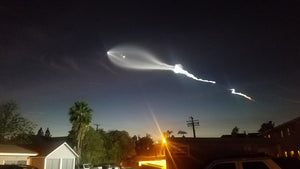Quadrantid Meteor Shower Jan 4th
Happy New Year OCTelescope friends!
The Quadrantids or "Quads" have a strange history. While most meteor showers come from comets, the object producing the Quadrantids is asteroid 2003 EH1. Some astronomers believe 2003 EH1 is the remainder of comet C/1490 Y1, which disappeared after a prominent meteor shower mentioned in Chinese records in 1490. It is believed that this meteor shower came from a breakup of part of the comet.
Furthermore, the radiant, appeared in the constellation Quadrans Muralis, designated by French astronomer Jerome Lalande in 1795. But In 1922, the International Astronomical Union formed a list of modern constellations and elected not to include Quadrans Muralis.
In modern astronomy, you can find the radiant of the Quads is somewhat between the handle of the Big Dipper and the head of the constellation Draco, but it is recommended to look away from it as the meteors further from the radiant will appear for longer. The peak period tends to be only six hours, the radiant is only visible between about 2 a.m. and 7 a.m. local time. At peak times, providing the moon and other lights don't wash them out, viewers will see about 120 meteors an hour!!!
Stay warm out there! Bring a big blanket and something to keep you off the ground for these cold winter nights.
We have a bunch of big holiday sales still going on. You can find a comprehensive list of all the sale items [HERE].
Happy New Year!
-OCTelescope







